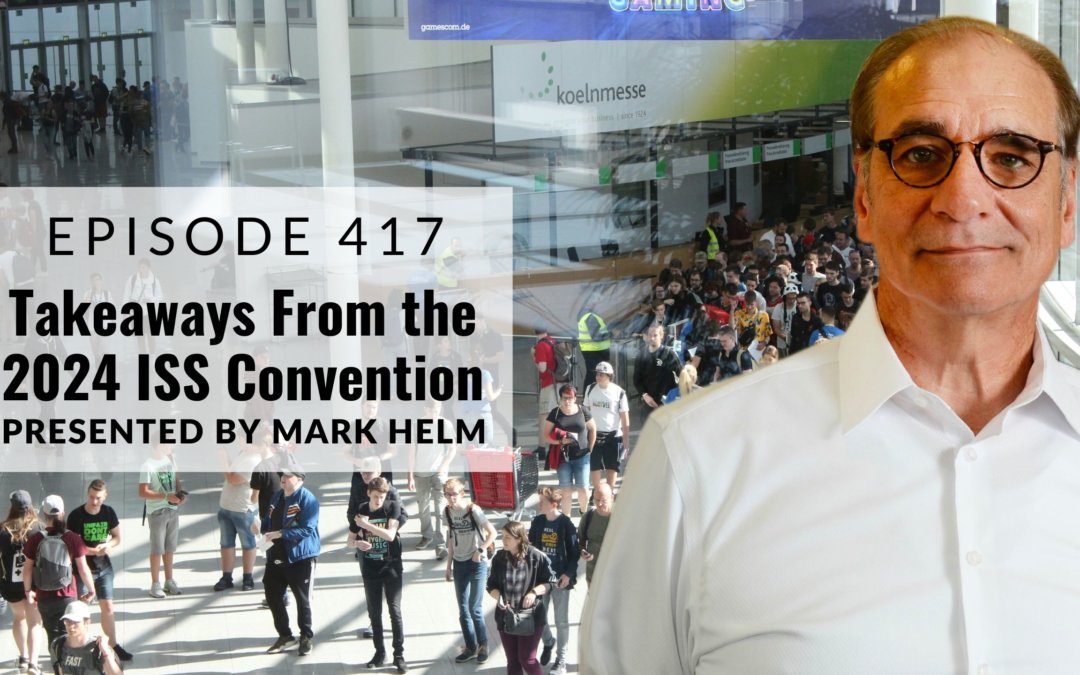As many of you know, I attended the Inside Self Storage (ISS) Convention two weeks ago in Las Vegas.
Not everyone could go, so here are a few takeaways in no particular order.
Consolidation of The Self-Storage Space
It’s not really surprising considering the amount of institutional money that has been invested into the self-storage space over the last decade.
In the last ten years, I have seen “smaller owners” go from approximately 62% to 48% of the self-storage facilities out there.
REITs have gone from approximately 22% to around 33%. The other 10% or so of smaller owner facilities have been sucked up by funds or regional, larger owners.
You may have thoughts about the “good or bad” of this phenomenon, but in whatever form of capitalism we have in our country today (and I am fairly clear it is a far cry from Adams Smith’s version of capitalism), our job as small investors is to not resist what is so and use it to our advantage.
Our investors, partners, and families are depending on us to do just that.
How this could look today is to take advantage of the challenges of buying and developing by figuring out a way to buy and develop, then exit (sell) to these players when the time is right.
I sold off two brands using this exact same method over the last decade (in truth, more by accident and opportunity than by design).
Industry is Evolving & Changing
I am constantly reminded that I am wrong at least 50% of the time in life.
I remember early in my commercial real estate career telling a landowner for a potential listing who wanted $1,000,000 for her commercial corner that “this site will never be worth that in my lifetime,” and who, within a year, land-leased the site to Walgreens at a rental rate equitant to $1 million dollars of value.
I learned then that “Never” is a word that should not leave my lips again.
I still think it, however.
My entire self-storage career has been defined by my knowledge of what “institutional-grade” self-storage is.
It is how I got into the business.
Selling self-storage to REITs.
Then, I got into the business and started redeveloping mom-and-pop projects into “institutional-grade” self-storage.
I knew that “Institutional grade” self-storage was always 50,000 square feet or more, managers on the payroll, certain security features, retail sales, etc.
Well…here is what’s so.
Extra Space purchased Storage Express for $590 million.
Storage Express owned 107 facilities, all or almost all smaller, automated facilities.
Public Storage has over 400 automated facilities.
The face of “Institutional Grade” self-storage is evolving. Nothing in the universe remains constant.
So, if you have a small project and you can develop or redevelop it well, you can still be game for larger players on the hunt in the future when it comes time to sell.
Yes, they want high-quality locations and property (i.e., not a single 10 unit building on a gravel or grass lot with no fence in a rural area on a two-lane road 50 miles from the nearest crossroad), but good smaller projects in primary, secondary, and even third tier markets could be something they would buy when you want to exit.
That could affect your going-out CAP rate a half to a full percentage over what I would have thought or said it could be two years ago.
New Vendors In The Space
I know I just talked about consolidation, and there has been a lot of consolidation among vendors and providers of products and services to us self-storage owners (Sparefoot…that’s all I should need to say).
However, I was pleasantly surprised to see the number of newer vendors in the Expo Hall. Especially new fabricators and construction-oriented vendors.
Perhaps it was because I was really focused on construction, being there with my new construction partner in the company we have created (more on this in future episodes).
I was very excited to see a number of new storage system providers fabricating and delivering the exact type of systems we use.
As construction prices and related services such as architectural and engineering prices seem to constantly rise, it is good to hear at least some initial estimates in their booths.
In our current economic landscape, more competition can be nothing but good for us smaller investors.
Our construction company, which was initially started to do deals I am part of in order to keep costs down, has expanded to take on other “smaller” investors where we can save a lot of up-front soft cost utilizing the techniques I have used over the years in a phase I “Owners Representative” role.
After biddable documents are created, we can then be one of any number of bids, offering a reduced “plus” in the “cost plus” type of contract during the construction phase if an owner wants to use us for that part as well.
Again, more on this later. This episode is on my key takeaways.
It was just good to see more competition in the construction world of self-storage.
I will also have a few other takeaways, but these will be in separate episodes over the next few months.
I love this business, and I can see now more than ever that it is critical not to “know” so much that we can’t change and evolve with the industry.
Many in the business will have a hard time getting past what they know, and they can be the projects we can buy over the next year or so.
Have fun in this fantastic business of self-storage.



